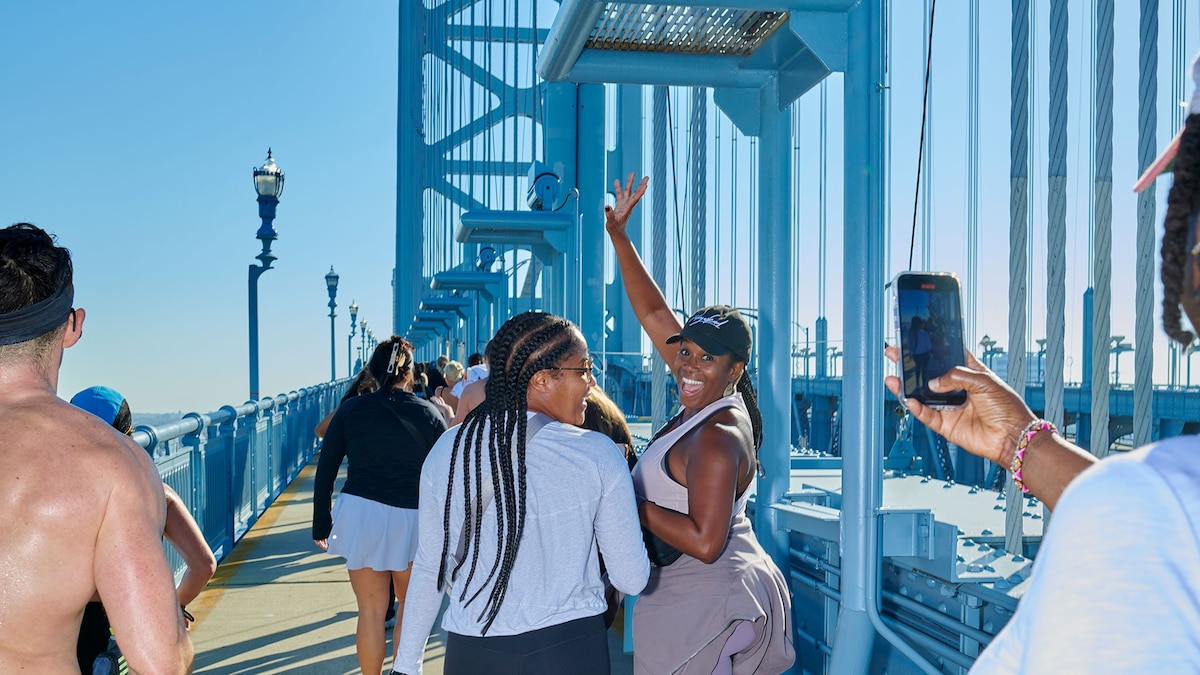Now Reading: How to plan a classic summer adventure in the Alps
-
01
How to plan a classic summer adventure in the Alps
How to plan a classic summer adventure in the Alps

This article was produced by National Geographic Traveller (UK).
Mother Nature had one of her wildest moments shaping the Alps, which thrust up millions of years ago when the African and Eurasian tectonic plates collided. These peaks rip across Central Europe for 700 miles in a whirl of limestone turrets, glacier-frosted summits, dense forests and misty waterfalls. As they do, they run through eight countries — Monaco, France, Italy, Switzerland, Liechtenstein, Austria, Germany and Slovenia — and around mighty rivers like the Rhine and Po.
These mountains’ rugged terrain and ever-changing weather once struck fear into those who had to cross them. Hannibal led his Carthaginian army and 37 elephants across rocky, icy heights to invade Italy in 218 BCE. Countless blizzard-battling troops, blister-footed pilgrims, and farmers and traders tugging mules and sleighs followed.
Then, the nature-loving Romantics triggered a fascination with the region in the late 18th and 19th centuries; it had that blend of savage wilderness and stormy weather they so prized. Poets, writers, painters and composers flowed in, from Goethe and Shelley to Wordsworth and Strauss.
Finally, Alpine tourism boomed in the mid-19th century. The Alps featured as a stop on the Grand Tour, and recreational skiing gained popularity. Queen Victoria trotted up Rigi mountain in central Switzerland on horseback, reportedly jotting in her diary: ‘We are amused!’ The Alps became the holy grail for intrepid climbers looking to make their mark. For everyone else, cogwheel railways began to unzip the heights.

The cable-car up from the clifftop town of Mürren to the Schilthorn summit offers views of the three peaks of the Eiger, Mönch and Jungfrau in the Bernese Alps.
Photograph by Getty Images; Alessandro Bellani
Today, you can walk along suspended bridges from peak to peak, or fly at speed down a high-altitude zip-line. You can take a cable car to swing in front of the north face of Switzerland’s Eiger mountain, or at eye level with 4,806m (15,767ft) Mont Blanc, the highest peak in the range. You can sit back and breeze through Alpine countries on a multi-day train ride, or strike out on a hut-to-hut hike into the realms of eagles and ibex. The Central Alps, which extend across Switzerland, Italy, Austria, France and Germany, are especially popular, with some resorts open year-round and easy international connections.
Over the centuries, legends have been born and made here. Olympic medallists; classic books from Johanna Spyri’s Heidi to Thomas Mann’s The Magic Mountain; and Hollywood blockbusters like The Sound of Music, The Italian Job and stunt-laced Bond movies. Why? Just look around you. Inspiration is everywhere. And part of it stems from the fact that — despite the centuries of exploration and advances in engineering — these mountains can never truly be tamed. Their wonder is as much about what can see as what you can’t: the peaks that lie beyond.
Itinerary 1: Hut-to-hut hiking in the Jungfrau
Start point: Wilderswil
End point: Schynige Platte
Distance travelled: 72 miles
Average length: 10 days
With the big three of the Eiger, Mönch and Jungfrau reaching as high as 4,158m (13,642ft) above cloud-wreathed valleys, timber chalets clinging to cliffsides, and flower-freckled meadows, the Jungfrau Region is the Swiss Alps of your mind’s eye. And there’s no better way to dive into these mountains than by lacing up your boots on the 10-day, hut-to-hut Tour of the Jungfrau hike.
As you give the day-trippers the slip, you’ll quickly find yourself in landscapes where only the echo of cowbells, whistle of marmots or sound of footfall on rock interrupt the silence. Beginning at Wilderswil village — accessible from the local hub of Interlaken — and ending at the nearby Schynige plateau, the hike is instantly spectacular, taking you clockwise from giddy viewpoints to summits, glacial lakes, meadows and booming waterfalls.
This being Switzerland, the paths are well-kept and have clear red-and-white waymarks, but don’t expect a walk in the park. This trek presents a challenge, with rugged trails, steep ascents and descents, and an overall 19,700ft of elevation gain. You’ll be hiking five to seven hours a day, but with the richest of rewards.
1. Faulhorn
Despite having a name that translates to ‘Lazy Rock’, Faulhorn has an 8,795ft summit that has to be earned by clambering over scree, boulder-dotted passes and high moors. It’s worth it for the views of glacier-frosted Eiger, Mönch and Jungfrau; jewel-blue lakes Thun and Brienz; and, on clear days, Germany’s Black Forest and France’s Vosges. Refuel over a tasting platter of regional cheese and ham on Berghotel Faulhorn’s terrace.
2. First
The trail whips through meadows to the small lake of Bachsee and beyond to the 7,165ft summit of First. Towering above the village of Grindelwald, First ramps up the action with its Cliff Walk, a suspended metal walkway bolted to the cliff face, peering across to the Eiger’s north face. Dart down to the valley on a zip line, mountain cart or jumbo scooter.

The Alps run through eight countries — Monaco, France, Italy, Switzerland, Liechtenstein, Austria, Germany and Slovenia.
Photograph by Michael_Koenigshofer
3. Gleckstein Hut
Dawn breaks in a blaze of gold-pink at Gleckstein Hut, one of many huts where you’ll sleep en route, pinned to the flanks of the snow-polished Wetterhorn at 7,601ft. After the steep hike up here, you’ll be glad of a hearty plate of rösti potatoes topped with bacon, Alpine cheese and fried egg. Rise with the first clatter of karabiners to see the sunrise, and perhaps glimpse an ibex.
4. Eiger Trail
No peak captivates more than the 13,015ft Eiger, a fang of rock and ice. Climbing it is strictly for pros, but you can get incredibly close to its mile-high north face on the two-hour Eiger Trail. The path runs like a thread-vein through pastures from the hamlet of Alpiglen to Eigergletscher railway station, passing wild streams and falls.
5. Mürren
Floating atop the western rim of the Lauterbrunnen Valley, Mürren village has dark-timber chalets and dress-circle views of the Jungfrau Alps. Walk the Blumental Panorama Trail, looking out for Alpine blooms like gentian and edelweiss, then stop at a dairy farm to buy mountain cheese for a picnic.
6. Schilthorn
It’s a steep, tough, dizzying hike up to the 9,741ft fang of Schilthorn. But at the top, perched like an eyrie above a rolling sea of peaks, its revolving restaurant Piz Gloria has 360-degree views reaching from Titlis to Mont Blanc. Arrive first thing to see golden light falling in curtains across the Jungfrau range. That cinematic backdrop hasn’t gone unnoticed — the peak starred in the 1969 Bond film On Her Majesty’s Secret Service.
Itinerary 2: Transalpine rail adventure
Start point: Munich, Germany
End point: Milan, Italy
Distance travelled: 490 miles
Average length: 10-14 days
Bounding effortlessly over viaducts, cresting mountain passes and skimming the shores of turquoise lakes, train travel in the Alps is pure edge-of-your-seat drama. Forget driving, this is the way to go, with trains running like clockwork and panoramic windows framing scenes of pastures, forest-cloaked slopes, rivers and church-topped villages between glacier-frosted mountains. Providing you’ve factored in ample time, you can stop off as you choose.
This is the big itinerary: a 10-day to two-week escapade, traversing four countries and dropping you into the heart of the Alps, including many of the best-known destinations. A convenient gateway is Munich in Germany, where you can chug to Füssen in the Bavarian Alps in two hours before nudging into Tyrol in Austria. Then, drop south west into the Engadine Valley in Switzerland and beyond to mellower climes in Sondrio, Italy, finally flying out from the hub of Milan.
You’ll look forward to riding Switzerland’s UNESCO-listed Bernina and Albula lines, which negotiate 196 bridges and viaducts and burrow through 55 tunnels. But highlights along the way are numerous and varied, from fairytale castles to riverside cities and medieval towns. Chances for outdoor adventure and relaxation abound, too, be it glacier hiking, white-river rafting or taking part in a high-altitude yoga class.
1. Füssen
The Alps rise high and thickly forested as the train breezes through Bavaria to the pastel-painted town of Füssen, snug against the Austrian border. The big-hitter is hilltop Neuschwanstein, the whimsically turreted, 19th-century schloss that was the vision of ‘Mad’ King Ludwig II. Fresh from a £17m makeover, it’s never looked better. Reutte, a bus or taxi ride across the border, is a two-and-a-half-hour train ride from Innsbruck, with one change.

The jagged Nordkette Alps north of Innsbruck, the capital of Tyrol, sneak into every photo of the town.
2. Innsbruck
In the capital of Tyrol, your gaze is instantly drawn to the jagged Nordkette Alps north of the city, which sneak into every photo. You can reach the summits by hopping in a space-age funicular designed by Zaha Hadid. Otherwise, wander the Altstadt (old town), looking out for the Golden Roof, a late-gothic oriel with 2,657 fire-gilded copper tiles; the baroque cathedral; and the lavish state apartments of the Habsburg palace, Hofburg.
3. St Anton am Arlberg
The Arlberg Alps razoring above St Anton are Austria at its wildest. Famous for hardcore downhill skiing and apres-ski parties in winter, this resort raises pulses in summer with hiking and biking trails threading high through meadows and pine forests to summits, plus mountain yoga and white-water rafting on the rapids of the Inn River.
4. Landwasser Viaduct
Listen out for the ‘wows’ as the train leaps spectacularly from cliff to wooded cliff across the single-track, six-arch, 213ft-high Landwasser Viaduct on the UNESCO World Heritage Albula line to St Moritz. Shortly after, you’ll pull into Bergün, an instant heart-stealer with its Romanesque church and Engadine-style chalets festooned with oriel windows and sgraffito decoration. Stop off here for away-from-the-crowds hikes in the Alps of Parc Ela, Switzerland’s biggest nature park.
5. Pontresina
Clasped between the glacier-capped daggers of the Bernina range, the village of Pontresina in the Upper Engadine is five miles east of more famous St Moritz. Rock climbers and ibex are in their element in these wild mountains. For a taster, try the two-hour Morteratsch Glacier Trail, edging the deeply crevassed blue ice. Or ride Muottas-Muragl funicular for views of 4,049m (13,284ft) Piz Bernina, the highest peak in the Eastern Alps.
6. Sondrio
With mellow weather, chiming bell towers and piazza-side cafes filled with lilting voices, Sondrio is a welcome shot of Italy. Shouldering up to the Rhaetian Alps and just a whisper away from the Swiss border, the town’s centro storico has a medieval castle, rustic stone houses and Renaissance palazzi. Climb through terraced vines to the hillside 15th-century Sanctuary of Our Lady of the Sassella.
Published in the May 2025 issue of National Geographic Traveller (UK)
To subscribe to National Geographic Traveller (UK) magazine click here. (Available in select countries only).























